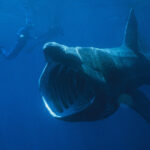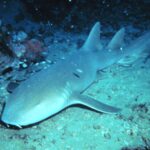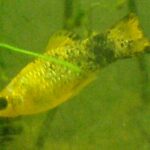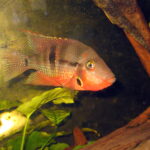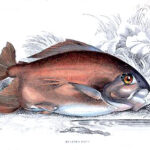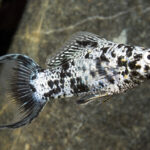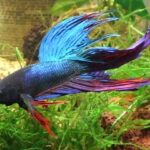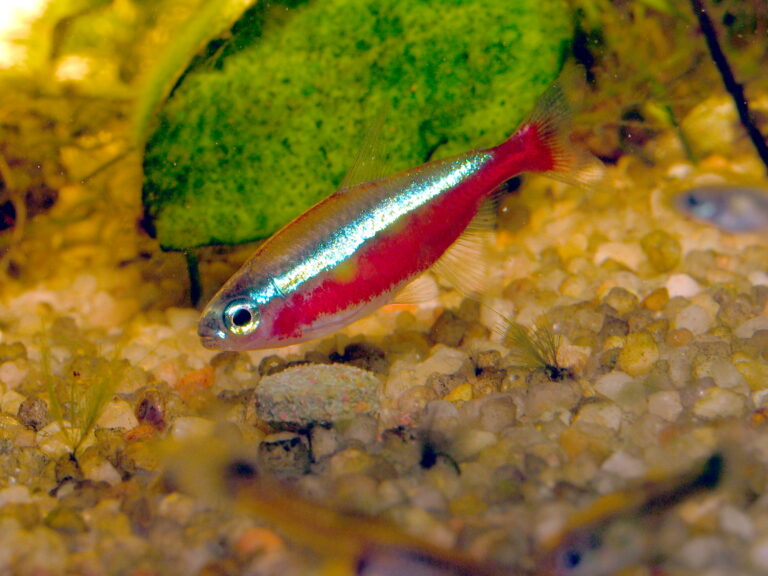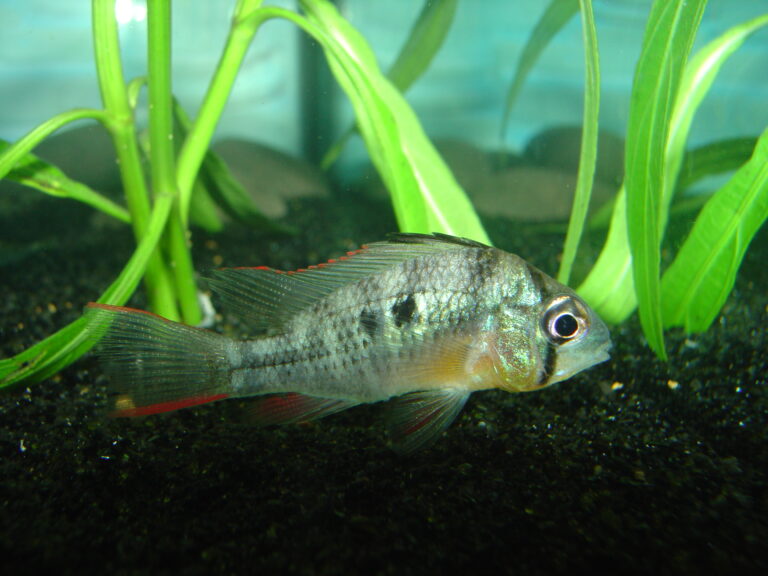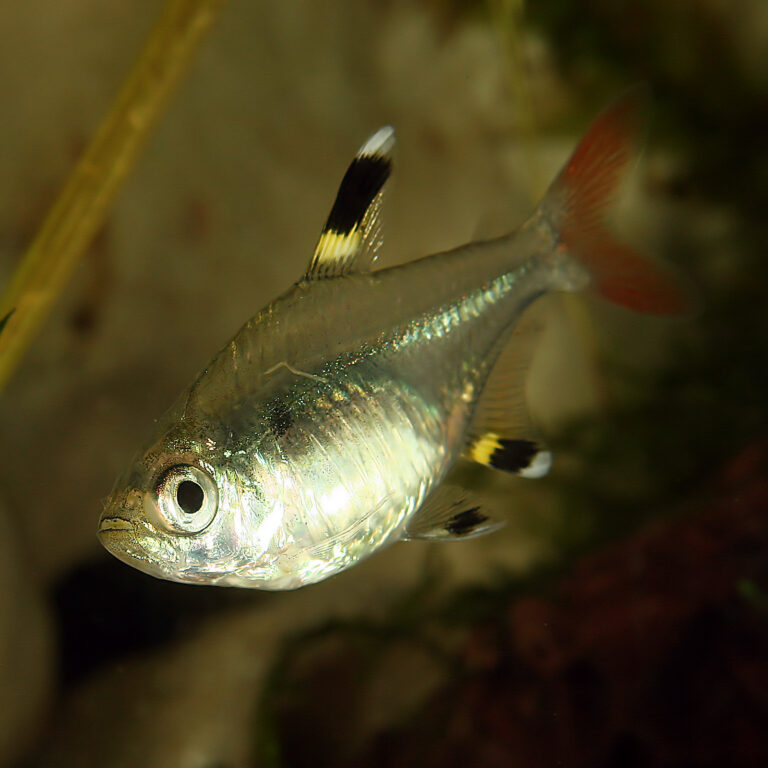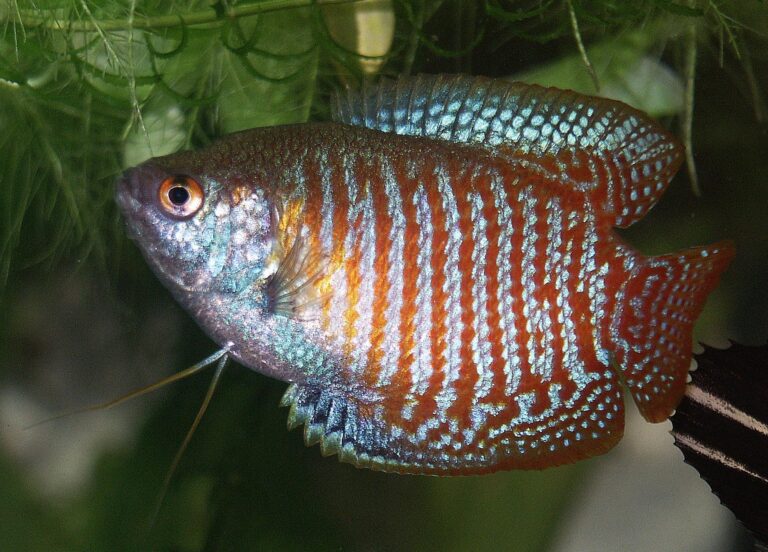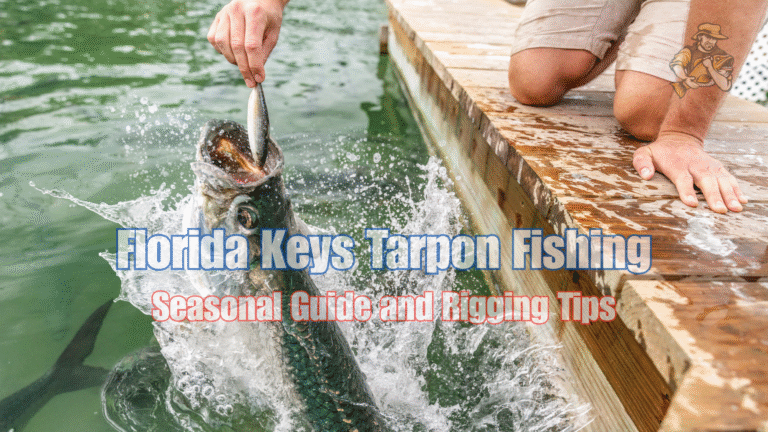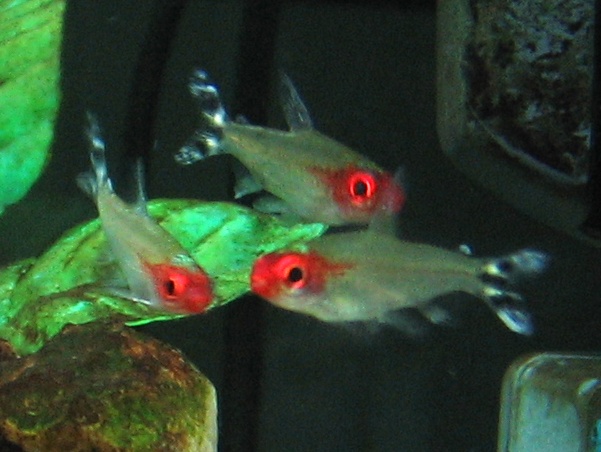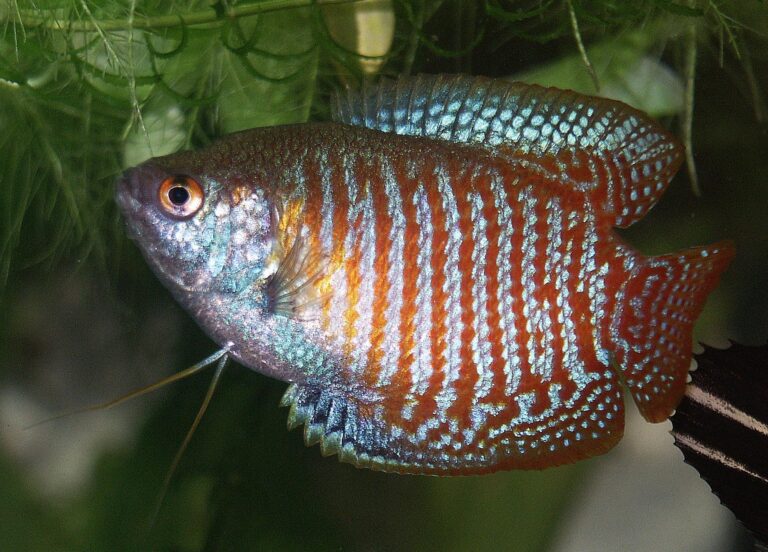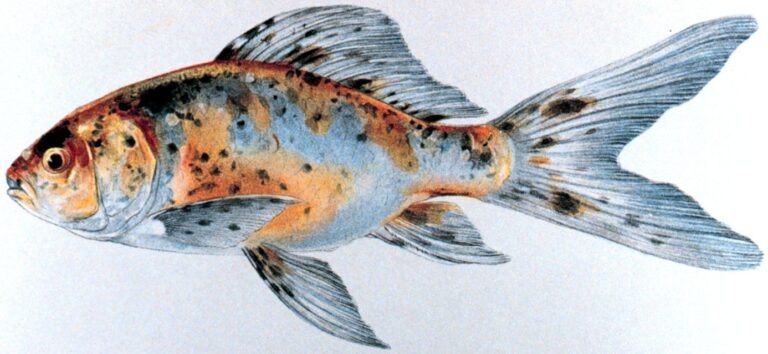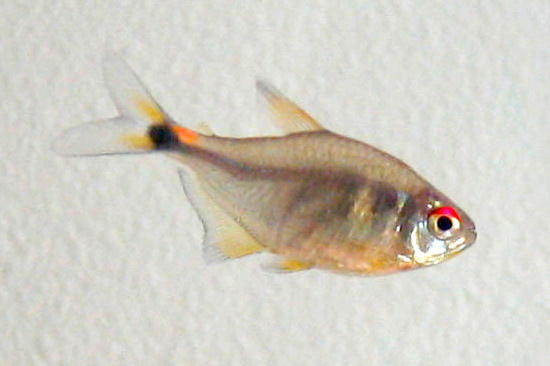Emperor Tetra
By Ryan Maron | Last Modified: June 8, 2025
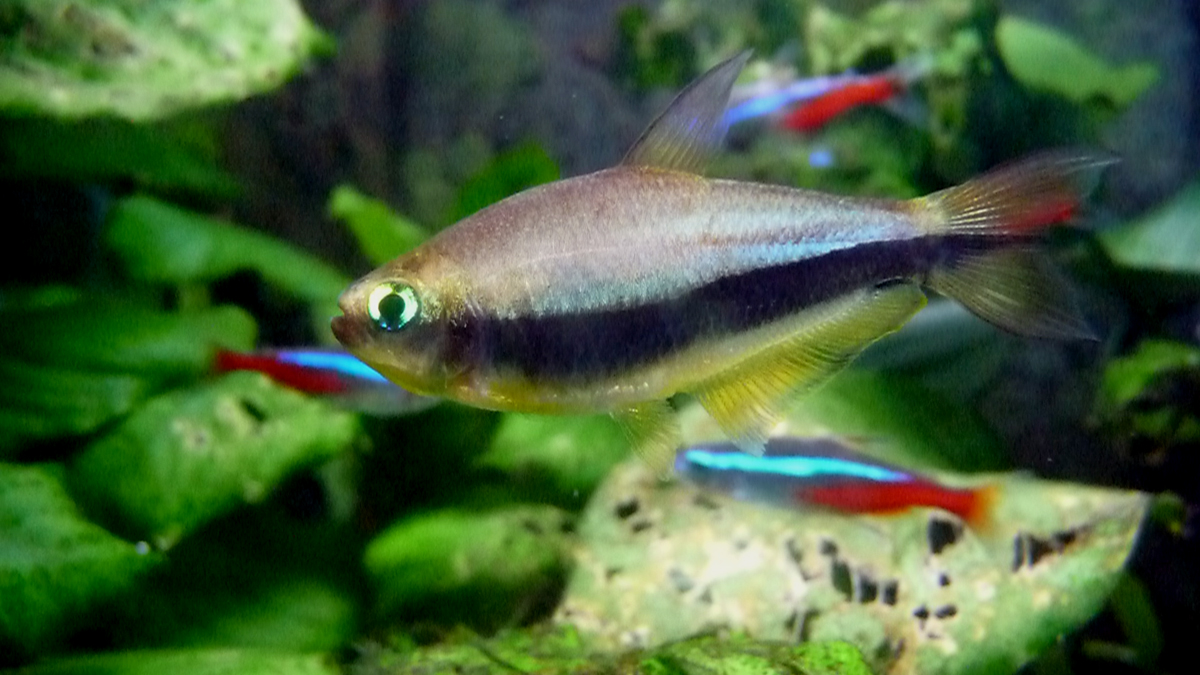
The Emperor Tetra (*Nematobrycon palmeri*) stands as one of the most distinctive and sought-after freshwater fish species in the aquarium trade, renowned for its striking coloration and elegant finnage. This South American characin species, first described by Eigenmann in 1911, derives its common name from the regal appearance of mature males, which display an impressive dorsal fin extension resembling a crown. Beyond its ornamental value, the Emperor Tetra plays a significant ecological role in its native Colombian river systems, serving as both a consumer of small invertebrates and a crucial prey species for larger predatory fish. The species contributes to nutrient cycling within its ecosystem through its feeding behaviors and serves as an indicator species for water quality in its natural habitat. Understanding this species’ biology and ecological requirements provides valuable insights into neotropical freshwater fish communities and supports both conservation efforts and sustainable aquaculture practices.
| Feature | Details |
|---|---|
| Common Name | Emperor Tetra |
| Scientific Name | Nematobrycon palmeri |
| Family | Characidae |
| Typical Size | 4.5-5.5 cm (1.8-2.2 inches) |
| Habitat | Slow-moving rivers and tributaries |
| Diet | Omnivorous – insects, crustaceans, plant matter |
| Distribution | Western Colombia, Atrato and San Juan river basins |
| Conservation Status | Least Concern |
Taxonomy & Classification
The Emperor Tetra belongs to the diverse family Characidae, which encompasses over 1,100 species of freshwater fish distributed throughout South and Central America, as well as parts of Africa. Within this family, *Nematobrycon palmeri* is classified under the subfamily Stevardiinae, a group characterized by their small size, schooling behavior, and distinctive reproductive strategies. The genus *Nematobrycon* contains only three recognized species, with the Emperor Tetra being the most widespread and well-studied member.
The species was originally described by Carl H. Eigenmann in 1911 based on specimens collected from Colombian river systems. The generic name *Nematobrycon* derives from Greek roots meaning “thread” and “to gnash,” referring to the elongated fin rays and feeding apparatus characteristic of the genus. The specific epithet *palmeri* honors Edward Palmer, an American botanist and collector who contributed significantly to the exploration of Central and South American flora and fauna during the late 19th and early 20th centuries.
Recent molecular phylogenetic studies have confirmed the Emperor Tetra’s placement within the Characidae family and have provided insights into its evolutionary relationships with other neotropical characins. These analyses suggest that the *Nematobrycon* lineage diverged from its closest relatives approximately 15-20 million years ago, coinciding with major geological events that shaped South American river systems. The species shows close genetic affinities with other small characids from the trans-Andean region of Colombia, reflecting shared evolutionary pressures and biogeographic history.
Physical Description
The Emperor Tetra exhibits remarkable sexual dimorphism, with males displaying significantly more elaborate coloration and finnage than their female counterparts. Adult males typically reach lengths of 5-5.5 centimeters, while females remain slightly smaller at 4.5-5 centimeters. The species’ most distinctive feature is the pronounced extension of the dorsal fin in mature males, which can extend well beyond the typical fin margin and creates the crown-like appearance that inspired the common name.
Male Emperor Tetras display a striking color pattern characterized by a deep purple-blue body coloration that intensifies during breeding periods. A prominent black horizontal stripe extends from the eye to the base of the caudal fin, bordered above and below by iridescent gold and silver bands. The dorsal fin shows a distinctive black and yellow pattern, with the elongated rays often tipped in bright white or pale yellow. The anal fin displays similar coloration, while the pelvic and pectoral fins remain largely transparent with subtle yellow tinges.
Female Emperor Tetras exhibit more subdued coloration, with a brownish-silver base color and less pronounced stripe patterns. Their fins lack the elaborate extensions seen in males, and the overall body shape appears more robust, particularly during reproductive periods. Both sexes possess the characteristic adipose fin typical of characiform fishes, which appears as a small, fleshy projection behind the dorsal fin.
The species’ eye structure reflects its ecological niche, with relatively large eyes positioned to optimize feeding in the dappled light conditions of their natural habitat. The mouth is small and terminal, equipped with fine teeth adapted for processing small invertebrates and plant matter. Various tetra species share similar morphological adaptations that reflect their shared evolutionary history and ecological roles within South American freshwater ecosystems.
Habitat & Distribution
The Emperor Tetra occupies a relatively restricted natural range within the Pacific coastal drainages of western Colombia, specifically within the Atrato and San Juan river basins. This region represents part of the Chocó biogeographic province, recognized as one of the world’s most biodiverse hotspots due to its unique geological history and climatic conditions. The species’ distribution is closely associated with the trans-Andean region, where the Cordillera Occidental separates Pacific and Atlantic drainage systems.
Within their native range, Emperor Tetras inhabit slow-moving rivers, tributaries, and associated floodplain environments characterized by soft, acidic water conditions. These aquatic systems typically maintain temperatures between 24-28°C throughout the year, with pH values ranging from 5.5-6.8 and extremely low mineral content. The water chemistry reflects the region’s high precipitation levels and the leaching of organic compounds from dense riparian forests, creating the dark, tannin-rich conditions that characterize many neotropical blackwater systems.
The species shows a strong preference for areas with dense aquatic vegetation and complex structural habitat provided by fallen trees, root systems, and overhanging terrestrial vegetation. These microhabitats offer protection from predators while providing abundant feeding opportunities among the associated invertebrate communities. During dry seasons, Emperor Tetras often concentrate in deeper pools and tributary confluences where water levels remain stable and oxygen concentrations stay within acceptable ranges.
Current distribution patterns suggest that the Emperor Tetra has experienced some range contraction due to habitat modification and water quality degradation associated with agricultural development and mining activities. However, the species’ adaptability to varying water conditions has allowed populations to persist in many areas where other sensitive species have declined. The restricted geographic range makes the species particularly vulnerable to localized environmental disturbances, emphasizing the importance of watershed-level conservation strategies.
Diet & Feeding Behavior
The Emperor Tetra exhibits omnivorous feeding behavior typical of many small characid species, with a diet that varies seasonally based on prey availability and environmental conditions. Stomach content analyses from wild populations reveal a diverse dietary composition that includes aquatic and terrestrial insects, small crustaceans, algae, plant matter, and organic detritus. This feeding flexibility allows the species to exploit multiple trophic niches within its ecosystem and contributes to its ecological success.
During high-water periods, when riparian forests flood and terrestrial arthropods become available, Emperor Tetras feed extensively on fallen insects, larvae, and other organic matter washed into the aquatic environment. Dipteran larvae, chironomid midges, and small ephemeropteran nymphs constitute primary prey items during these periods. The species employs both active hunting and opportunistic feeding strategies, often forming loose aggregations near areas of high prey density.
As water levels recede, the diet shifts toward more traditional aquatic prey items including small crustaceans, copepods, and various invertebrate larvae. The species demonstrates particular effectiveness at exploiting biofilm communities that develop on submerged surfaces, using their fine teeth to scrape algae and associated microorganisms from plant surfaces and woody debris. This feeding behavior contributes significantly to nutrient cycling within their aquatic environment.
Feeding behavior shows distinct diel patterns, with peak activity occurring during dawn and dusk periods when light conditions favor prey detection while providing some protection from visual predators. The species exhibits social feeding behaviors, with individuals often coordinating foraging activities and sharing information about productive feeding areas through chemical and visual cues. This cooperative behavior enhances foraging efficiency and provides additional protection against predation risk.
Behavior & Adaptations
Emperor Tetras exhibit complex social behaviors that reflect their evolutionary adaptations to life in structured freshwater environments. The species demonstrates facultative schooling behavior, forming loose aggregations of 10-50 individuals during feeding and migration activities while maintaining smaller group sizes during breeding periods. These social structures provide multiple benefits including enhanced predator detection, improved foraging efficiency, and increased reproductive success through coordinated spawning activities.
Territorial behavior becomes pronounced during reproductive periods, with dominant males establishing and defending small territories around suitable spawning sites. These territories typically encompass areas with fine-leaved aquatic plants or other suitable substrates for egg deposition. Males engage in elaborate courtship displays involving intensified coloration, extended fin displays, and ritualized swimming patterns designed to attract females and discourage competing males.
The species has evolved several physiological adaptations that enable survival in the challenging environmental conditions of their native habitat. Their gill structure shows modifications that enhance oxygen extraction efficiency in the poorly oxygenated waters typical of densely vegetated tropical systems. Additionally, their kidney function has adapted to maintain osmotic balance in the extremely soft water conditions characteristic of their natural environment.
Stress response mechanisms in Emperor Tetras include rapid color changes that provide camouflage benefits and communication functions within social groups. When threatened, individuals can quickly fade their bright coloration to blend with surrounding vegetation or substrate patterns. This behavioral plasticity, combined with their small size and agile swimming ability, provides effective anti-predator strategies in their natural habitat. The species also demonstrates remarkable behavioral flexibility in aquarium environments, adapting to artificial conditions while maintaining many of their natural behavioral patterns.
Reproduction & Life Cycle
The reproductive biology of the Emperor Tetra follows patterns typical of many small characid species, with seasonal breeding cycles closely tied to environmental conditions in their native habitat. Breeding activity peaks during the wet season when water levels rise and food availability increases, providing optimal conditions for egg development and fry survival. Sexual maturity is reached at approximately 6-8 months of age, corresponding to adult body sizes of 3.5-4 centimeters for both sexes.
Courtship behavior involves elaborate displays by territorial males, who intensify their coloration and extend their fins to maximum dimensions while performing ritualized swimming patterns near potential spawning sites. Receptive females approach these display areas and engage in species-specific courtship interactions that may continue for several hours before spawning occurs. The pair spawning behavior involves synchronized swimming movements culminating in simultaneous release of eggs and sperm over suitable substrate.
Females typically deposit 100-200 adhesive eggs during each spawning event, attaching them to fine-leaved aquatic plants, moss, or other suitable surfaces within the male’s territory. The eggs are spherical, measuring approximately 1.2-1.5 millimeters in diameter, with a transparent chorion that allows observation of developing embryos. Embryonic development proceeds rapidly in the warm tropical conditions, with hatching occurring 24-36 hours after fertilization depending on water temperature.
Newly hatched larvae possess a large yolk sac that provides nutrition for the first 3-4 days of development. Free-swimming fry begin feeding on microscopic organisms including rotifers, paramecia, and other protozoans before transitioning to larger prey items as they grow. Growth rates vary with food availability and environmental conditions, but juveniles typically reach 1.5-2 centimeters in length within 8-10 weeks under optimal conditions. The species’ relatively short generation time and high reproductive potential contribute to population resilience in variable environmental conditions.
Predators & Threats
Within their natural ecosystem, Emperor Tetras face predation pressure from a diverse array of aquatic and semi-aquatic predators that exploit different life stages and behavioral patterns. Adult fish predators include larger characins, cichlids, and catfish species that inhabit the same river systems. Particularly significant predators include pike characins (*Boulengerella* species), peacock bass (*Cichla* species), and various pimelodid catfish that actively hunt small schooling fish in open water areas.
Juvenile and larval stages face additional predation risks from invertebrate predators including dragonfly nymphs, diving beetles, and predaceous copepods that exploit the nursery areas where young Emperor Tetras develop. Aerial predators such as kingfishers, herons, and other piscivorous birds also contribute to mortality, particularly in shallow areas where the fish concentrate during feeding activities.
Human-induced threats represent an increasingly significant challenge for Emperor Tetra populations throughout their native range. Agricultural expansion and cattle ranching have resulted in widespread deforestation within their watershed, leading to increased sedimentation, altered water chemistry, and habitat degradation. Mining activities, particularly alluvial gold mining, have introduced heavy metals and other contaminants into many river systems while physically disrupting spawning and nursery habitats.
Water extraction for agricultural irrigation and urban development has reduced flow volumes in some tributary systems, concentrating fish populations and making them more vulnerable to environmental fluctuations and disease outbreaks. Climate change effects, including altered precipitation patterns and increased frequency of extreme weather events, may further stress populations already impacted by habitat modification. The species’ restricted geographic range makes it particularly vulnerable to localized environmental disturbances that could affect entire populations.
Collection pressure for the aquarium trade represents another potential threat, although sustainable aquaculture practices have reduced reliance on wild-caught specimens in recent years. Monitoring of collection activities and implementation of quotas help ensure that commercial harvesting remains within sustainable limits.
Conservation Status
The Emperor Tetra currently maintains a conservation status of Least Concern according to the International Union for Conservation of Nature (IUCN), reflecting the species’ relatively stable population levels and continued presence throughout most of its historic range. However, this classification masks concerning trends in habitat quality and localized population declines that warrant ongoing monitoring and conservation attention.
Recent population assessments indicate that while the species remains common in suitable habitat, the total area of available habitat has declined by an estimated 20-30% over the past two decades due to anthropogenic pressures. This habitat loss has resulted in population fragmentation and reduced genetic connectivity between different river systems, potentially compromising long-term population viability.
Conservation efforts focus primarily on watershed-level habitat protection and restoration activities that benefit entire aquatic communities rather than single species. Protected areas within the Chocó region provide some habitat security, but enforcement challenges and continued pressure from illegal activities limit their effectiveness. Community-based conservation programs that engage local stakeholders in habitat protection have shown promise in some areas.
The development of sustainable aquaculture techniques for Emperor Tetras has reduced pressure on wild populations while providing economic opportunities for local communities. Captive breeding programs maintain genetic diversity and serve as insurance populations against potential future declines. These programs also support research efforts that improve understanding of the species’ biology and ecological requirements.
International trade regulations under CITES do not currently apply to Emperor Tetras, but voluntary certification programs within the aquarium industry promote sustainable collection practices and habitat conservation. Continued monitoring of population trends and habitat conditions will be essential for early detection of any changes that might warrant elevated conservation status or additional protective measures.
Human Interaction
The relationship between humans and Emperor Tetras centers primarily around the ornamental fish trade, where the species has maintained popularity among aquarium enthusiasts for over five decades. The species’ striking appearance, relatively peaceful temperament, and moderate care requirements have made it a staple of the tropical fish hobby. Commercial breeding operations now produce the majority of specimens in the aquarium trade, reducing pressure on wild populations while providing economic benefits to producing regions.
In their native range, Emperor Tetras have limited direct economic importance for local communities, although they contribute to subsistence fishing activities and may occasionally appear in local markets. The species’ small size limits its value as a food fish, but it forms part of the broader aquatic biodiversity that supports ecosystem services including nutrient cycling and pest control.
Scientific research involving Emperor Tetras has contributed valuable insights into neotropical fish biology, behavior, and ecology. The species serves as a model organism for studies of sexual selection, territorial behavior, and adaptation to acidic water conditions. Research findings have applications for aquaculture development, conservation biology, and understanding of evolutionary processes in freshwater fish communities.
Educational programs featuring Emperor Tetras help raise awareness about neotropical biodiversity and conservation issues. Public aquaria and educational institutions use the species to illustrate concepts related to ecosystem functioning, adaptation, and the importance of habitat conservation. Basic fishing techniques used by researchers to study these fish contribute to our understanding of small fish behavior and ecology.
The aquarium hobby has inadvertently contributed to conservation efforts by funding research, supporting protected area management, and raising awareness about tropical freshwater ecosystems. However, hobbyists must remain vigilant about preventing escapes that could establish invasive populations in non-native environments.
Interesting Facts
Emperor Tetras possess the remarkable ability to change their coloration intensity within seconds, a physiological response controlled by specialized cells called chromatophores. This rapid color change serves multiple functions including communication, camouflage, and social signaling within their complex hierarchical social structure. Dominant males can intensify their purple-blue coloration to nearly twice the normal intensity during territorial disputes or courtship activities.
The species demonstrates an unusual form of cooperative breeding behavior where subordinate males may assist dominant individuals in territory defense and nest maintenance activities. This altruistic behavior, rare among characid fishes, may represent a strategy for gaining future breeding opportunities or maintaining group cohesion in resource-limited environments.
Research has revealed that Emperor Tetras possess exceptional spatial memory capabilities, allowing individuals to remember the locations of food sources, shelter sites, and territorial boundaries for extended periods. Laboratory studies demonstrate that fish can navigate complex maze systems and remember optimal routes for up to several weeks, suggesting sophisticated cognitive abilities that aid survival in their structurally complex natural habitat.
The species exhibits unusual sensitivity to electromagnetic fields, possibly related to navigation abilities or predator detection mechanisms. This sensitivity may help explain their remarkable ability to locate optimal habitat conditions and coordinate group movements during seasonal migrations between feeding and breeding areas.
Emperor Tetras demonstrate one of the longest recorded lifespans among small characid species, with documented ages exceeding 8 years in optimal aquarium conditions. This longevity, combined with their delayed sexual maturity, suggests evolutionary adaptations to stable environmental conditions where reproductive success depends more on longevity than rapid reproduction.
The species’ distinctive eye structure includes specialized adaptations for detecting polarized light patterns, enhancing their ability to navigate in the dappled light conditions beneath forest canopies. This visual adaptation also improves their capacity to detect transparent prey items and recognize subtle changes in water conditions that might indicate environmental threats.
Frequently Asked Questions
What water conditions do Emperor Tetras require in aquarium settings?
Emperor Tetras thrive in soft, slightly acidic water conditions that replicate their natural habitat. Optimal parameters include temperatures between 24-27°C, pH levels of 6.0-7.0, and very soft water with minimal mineral content. Regular water changes and efficient filtration help maintain the stable conditions essential for their health and breeding success.
How can you distinguish between male and female Emperor Tetras?
Sexual dimorphism in Emperor Tetras becomes apparent as fish mature, with males developing elongated dorsal and anal fins that extend well beyond the normal fin margins. Males also display more intense coloration, particularly the purple-blue body color and distinct stripe patterns, while females remain smaller with more subdued brown-silver coloration and rounded fins.
Are Emperor Tetras suitable for community aquarium environments?
Emperor Tetras generally adapt well to community aquariums when housed with other peaceful species of similar size and water requirements. They prefer to be kept in groups of at least six individuals to encourage natural schooling behavior, and they coexist successfully with other small characins, peaceful catfish, and non-aggressive cichlid species.
What breeding conditions encourage Emperor Tetra reproduction in captivity?
Successful breeding requires slightly warmer water temperatures around 26-28°C, very soft acidic water, and abundant fine-leaved plants or spawning mops for egg deposition. Conditioning breeding pairs with high-quality foods including live or frozen invertebrates helps trigger spawning behavior, while subdued lighting and minimal disturbance create optimal breeding conditions.
Conclusion
The Emperor Tetra represents a remarkable example of neotropical freshwater fish diversity, combining striking beauty with fascinating behavioral complexity and important ecological functions. As both a key component of Colombian river ecosystems and a beloved aquarium species, *Nematobrycon palmeri* continues to contribute valuable insights into tropical fish biology while facing ongoing conservation challenges in its native habitat. Continued research, habitat protection, and sustainable aquaculture practices will be essential for ensuring that future generations can appreciate and study this remarkable species in both natural and captive environments.
Share The Article:
More Fish Species:
-
Cardinal Tetra
The Cardinal Tetra (Paracheirodon axelrodi) stands as one of the most vibrant and sought-after freshwater aquarium fish in the…
-
Channel Catfish
The Channel Catfish stands as one of North America’s most recognizable and economically important freshwater fish species. Known scientifically…
-
Bolivian Ram
The Bolivian Ram (Mikrogeophagus altispinosus) stands as one of South America’s most captivating cichlid species, representing a prime example…
-
Pristella Tetra
The Pristella Tetra (Pristella maxillaris) stands as one of South America’s most distinctive freshwater aquarium species, renowned for its…
-
Black Neon Tetra
The Black Neon Tetra (Hyphessobrycon herbertaxelrodi) stands as one of the most distinctive freshwater fish species in the aquarium…
-
Gouramis
Gouramis represent one of the most fascinating and diverse groups of freshwater fish, belonging to the family Osphronemidae within…
Discover
-
Offshore Swordfish fishing: Night Techniques and Premier Gear
The first time I ventured into the darkness 30 miles offshore of Key West for swordfish, I was woefully…
-
California Fishing License Guide: Costs, Types & How to Buy (2025)
Getting your California fishing license might seem like a hassle, but it’s actually pretty straightforward once you know the…
-
Why Stoner Fish Catch is Different: Unusual Angling Tactics
Let’s face it – some fish just act plain weird. Whether you’re an experienced angler or just starting out,…
-
Florida Keys Tarpon Fishing: Seasonal Guide and Rigging Tips
I still remember my first tarpon hookup in the Florida Keys like it happened yesterday, not 17 years ago….
-
7 Shark Fishing Tactics That Actually Work (Expert Guide)
Shark fishing remains one of those bucket-list experiences that separates casual anglers from the truly adventure-hungry. But here’s the…
-
European Pike Fishing: Top Techniques for Northern Pike
I still remember my first encounter with European pike fishing methods. It was during a trip to Sweden about…
Discover
-
Rummy Nose Tetra
The Rummy Nose Tetra stands as one of the most distinctive and recognizable small freshwater fish species in South…
-
Dwarf Gourami
The Dwarf Gourami (Trichogaster lalius) stands as one of the most popular freshwater aquarium fish species, renowned for its…
-
Shubunkin Goldfish
The Shubunkin Goldfish (Carassius auratus) represents one of the most popular and visually striking varieties of goldfish kept in…
-
Pensacola Fishing Tides Decoded: Fish More, Catch More
Look, I’ve spent the better part of my fishing life getting absolutely schooled by Pensacola’s tides. Just last month,…
-
Head and Tail Light Tetra
The Head and Tail Light Tetra (*Hemigrammus ocellifer*) stands as one of South America’s most distinctive characin species, instantly…
-
Fishing in Long Beach: Best Guide (Local Secrets Revealed)
There’s something magical about casting a line along the Southern California coast, especially when fishing in Long Beach. I’ve…

